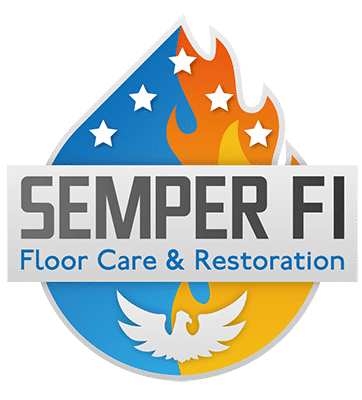Water damage is one of the most common and costly issues homeowners face, especially in areas like Yuma, AZ, where seasonal changes and occasional plumbing issues can cause unexpected leaks. While water can enter a home in many ways, it’s the damage it causes behind the scenes that often leads to significant structural issues—and drywall is one of the first places to show signs. At Semper Fi Floor Care and Restoration, we’ve seen it all when it comes to water-damaged drywall. Our team is ready to help, 24/7. Call us at (928) 228-4960 if you suspect any signs of damage.
Why Drywall is So Vulnerable to Water Damage
Drywall, also known as gypsum board, is a common construction material used for interior walls and ceilings. It’s affordable, lightweight, and easy to install. However, its composition—primarily gypsum encased in paper—makes it highly susceptible to water damage. Once moisture seeps in, it can cause a range of issues including warping, swelling, and mold growth.
Because drywall is porous, even a small leak or an increase in humidity can start the damage process. This is why early detection and immediate remediation are so crucial.
Common Causes of Water Damage in Walls
Understanding the root cause of water damage is essential for prevention. Here are some common sources:
- Leaky Pipes: Plumbing hidden behind walls can develop leaks over time due to wear and tear or freezing temperatures.
- Roof Leaks: Water from a compromised roof can trickle down into walls.
- Condensation: Poor insulation can lead to condensation inside the walls, particularly in bathrooms or laundry rooms.
- Flooding: Any type of flooding, whether from natural disasters or appliance malfunctions, can saturate drywall quickly.
- HVAC Issues: Improperly functioning heating or cooling systems can create condensation or leaks.
Visible Signs of Drywall Water Damage
1. Stains and Discoloration
One of the most obvious signs is a brownish, yellow, or copper-toned stain. These patches may appear on walls or ceilings and typically have irregular borders. The stain may darken or spread over time, indicating ongoing water intrusion.
2. Soft or Spongy Texture
Press lightly on your drywall. If it feels soft, spongy, or crumbles under pressure, water has likely compromised its structural integrity.
3. Bubbling or Peeling Paint
Water can cause paint or wallpaper to lift away from the surface. Bubbling, cracking, or peeling is a common red flag that water is trapped beneath the surface.
4. Warping or Buckling
Moisture causes the gypsum core of drywall to swell and distort. Warped or buckling drywall is often a sign of prolonged exposure to moisture.
5. Musty Odors
A persistent musty smell can signal mold or mildew growth, both of which thrive in damp environments. If you notice this odor and can’t identify the source, it could be hidden water damage.
6. Mold Growth
Black, green, or white spots on the drywall surface may indicate mold. Even if you don’t see mold, it could still be growing behind the walls.
7. Sagging Ceilings or Walls
When water is trapped above the drywall, gravity causes the wall or ceiling to bow or sag. This can become dangerous if the weight causes a collapse.
Hidden Signs of Water Damage
Not all signs of water damage are visible to the naked eye. Here are a few less-obvious clues:
- Unusual Increase in Water Bills: A hidden leak could be driving up your utility costs.
- Unexplained Allergy Symptoms: Mold spores in the air can trigger respiratory problems.
- Cracks in Paint or Drywall: Tiny cracks can indicate the wall material has expanded and contracted due to moisture.
If you suspect hidden water damage, it’s best to contact a professional right away. At Semper Fi Floor Care and Restoration, we use advanced moisture detection tools to find water even when it’s not visible. Call(928) 228-4960 to schedule an inspection.
Why Early Detection and Repair is Critical
The longer water damage goes untreated, the more extensive (and expensive) the repair. Here’s why timely intervention is crucial:
- Prevents Mold Growth: Mold can begin to grow in as little as 24–48 hours.
- Protects Structural Integrity: Drywall is often attached to wooden studs. Moisture can cause rot in both materials.
- Saves Money: Addressing a small leak early can prevent large-scale water damage restoration.
- Improves Indoor Air Quality: Damp environments are breeding grounds for allergens and bacteria.
What To Do If You Notice Water Damage in Your Drywall
- Stop the Source: If you know where the water is coming from (e.g., a burst pipe), shut off the water supply immediately.
- Document the Damage: Take photos and write notes—this will help with insurance claims.
- Avoid DIY Repairs: Covering up the damage with paint won’t solve the underlying problem.
- Call the Experts: Let professionals assess and repair the damage thoroughly.
Semper Fi Floor Care and Restoration offers 24/7 emergency water damage restoration. We are licensed contractors (ROC# 349271) and are fully equipped to handle everything from moisture detection and mold remediation to drywall replacement and restoration. Contact us today at (928) 228-4960.
How We Help at Semper Fi Floor Care and Restoration
- Emergency Response: Available 24/7 for urgent water damage situations.
- Advanced Technology: Moisture meters, infrared cameras, and leak detection tools.
- Mold Remediation: We eliminate harmful spores and repair affected areas.
- Licensed and Insured: ROC# 349271 — we handle residential and commercial jobs.
- Veteran-Owned and Operated: We bring Marine-strong integrity and reliability to every job.
We proudly serve Yuma, Somerton, Wellton, San Luis, and surrounding areas.
FAQs
1. How can you tell if the drywall is water damaged?
Look for stains, bubbling paint, peeling wallpaper, or soft, sagging areas. Water-damaged drywall may also have a musty smell or show mold spots. If the wall feels spongy when touched, it’s a strong sign of water intrusion. Catching it early can prevent bigger issues. Call Semper Fi Floor Care and Restoration at (928) 228-4960 for a professional inspection.
2. Does drywall need to be replaced after a water leak?
If drywall has been wet for more than 24–48 hours or shows mold, stains, or softness, it should be replaced. Damp drywall can harbor mold and weaken over time. Quick action is key to preventing further damage. For safe, expert repairs, call Semper Fi Floor Care and Restoration at (928) 228-4960.
3. Is drywall ruined if it gets wet?
Drywall is not always ruined, but if it’s saturated or stays wet too long, it can weaken, warp, or grow mold. Even if it dries, structural integrity may be compromised. When in doubt, it’s best to replace it. Call Semper Fi Floor Care and Restoration at (928) 228-4960for a proper assessment.
4. How long can drywall be wet before mold?
Mold can start growing on wet drywall in as little as 24–48 hours. Drywall absorbs moisture quickly, making it a prime spot for mold growth. Early detection and drying are crucial.
5. How do you check for water behind walls?
Professionals use moisture meters and infrared cameras to detect hidden water. Signs include wall stains, warping, musty odors, or higher water bills. Don’t ignore hidden leaks—they can lead to mold and structural issues.
6. How much does it cost to replace drywall?
Drywall replacement costs between $1.50 and $3.50 per square foot. Factors include damage extent, labor, and material costs. Severe water or mold damage can raise the price.
7. How much water does it take to damage drywall?
Even a small leak can damage drywall. Because it’s porous, drywall absorbs moisture fast, leading to stains, warping, or mold. One cup of water in the wrong place can cause problems.
8. What does a leak in drywall look like?
Leaks often show up as brown or yellow stains, bubbling paint, or soft, warped spots. You might also smell a musty odor or see mold forming. These signs mean moisture is trapped behind the wall.
9. How much does it cost to replace drywall after flooding?
After flooding, drywall replacement typically costs $3–$6 per square foot. Mold remediation, disposal, and repainting can add to the cost. Severe damage may require a full wall or room redo.
10. How do you detect moisture behind drywall?
Professionals use tools like moisture meters and thermal cameras to find hidden water. Musty odors, soft spots, or visible mold can also be clues. Don’t risk DIY—get a proper check from the pros.


